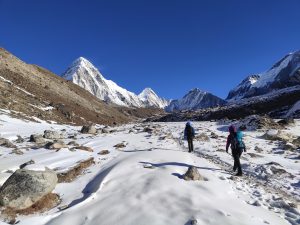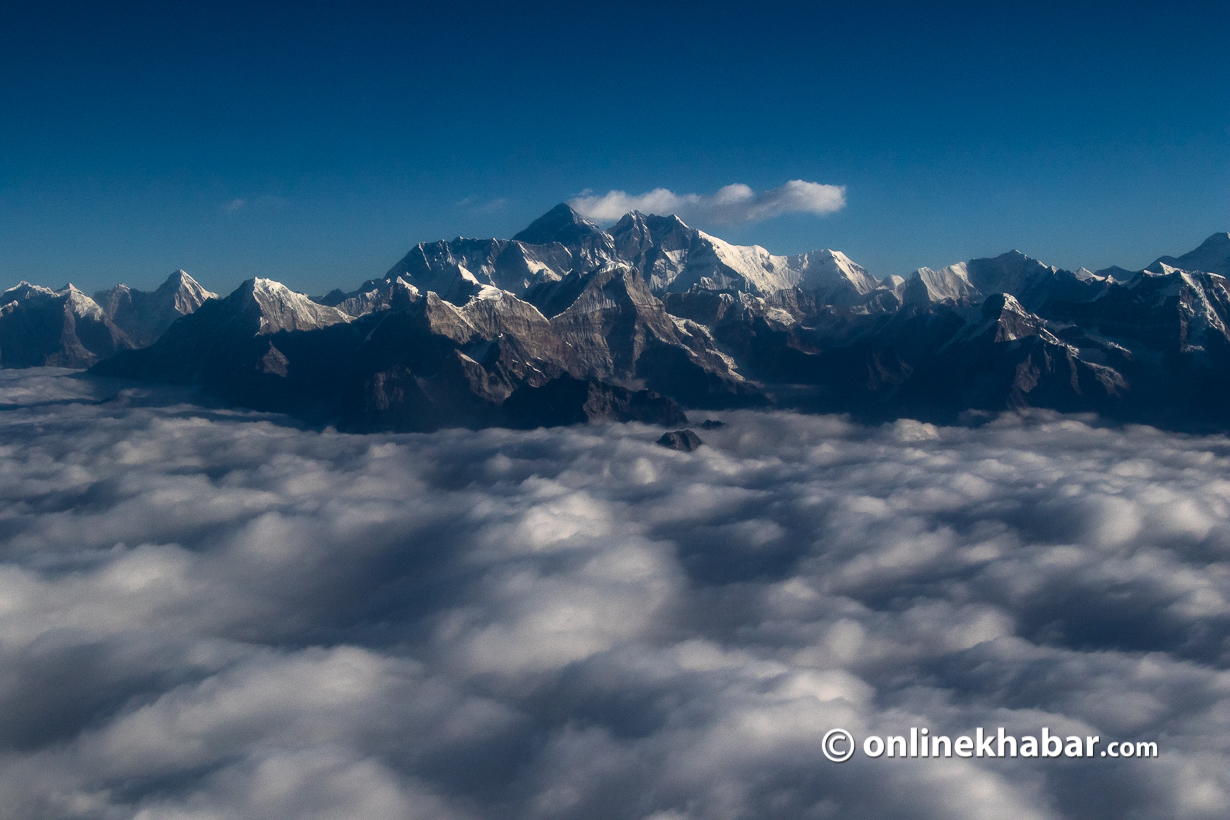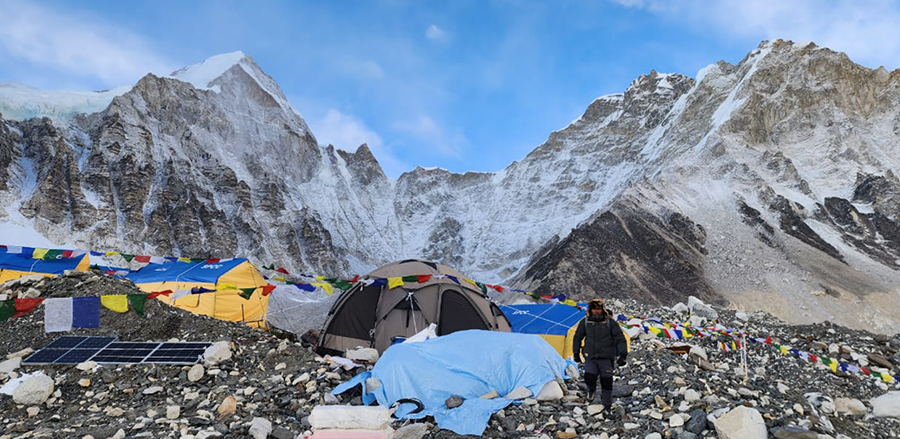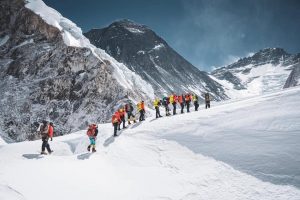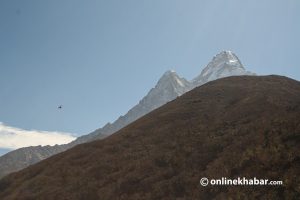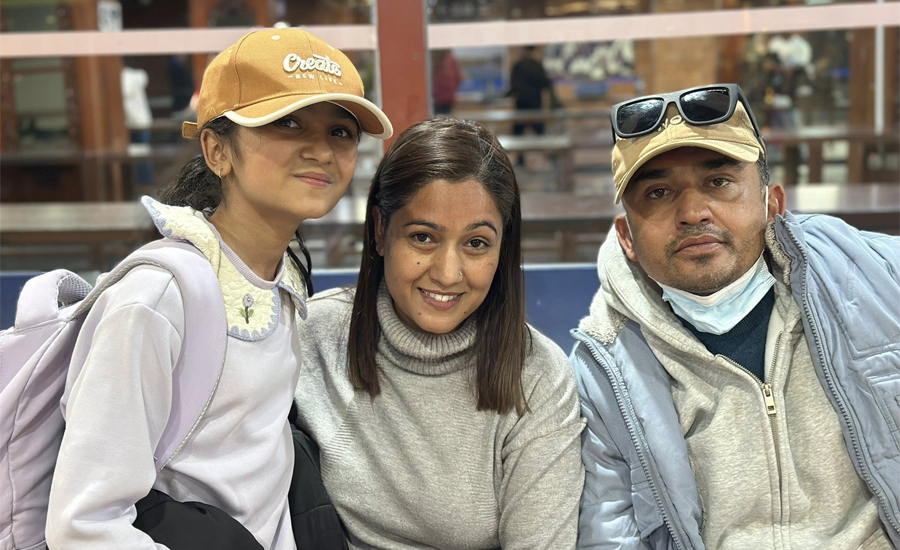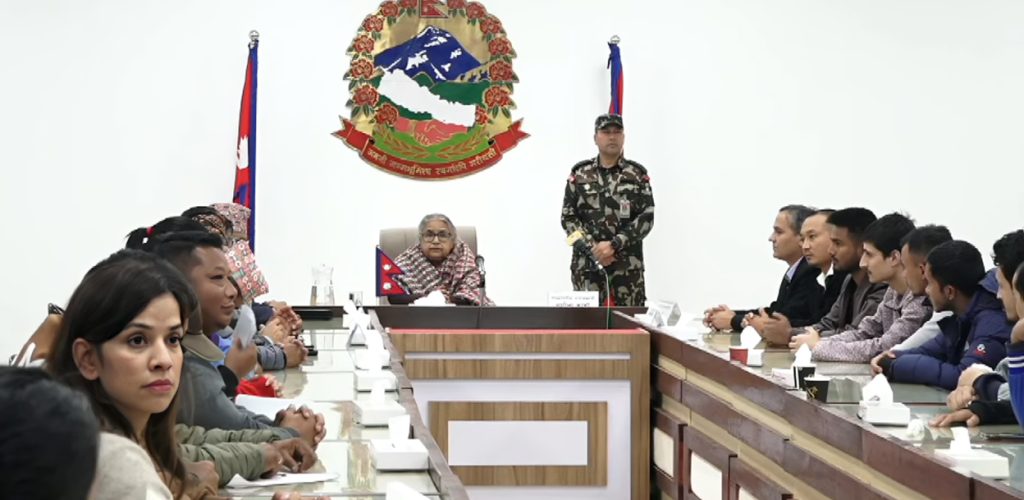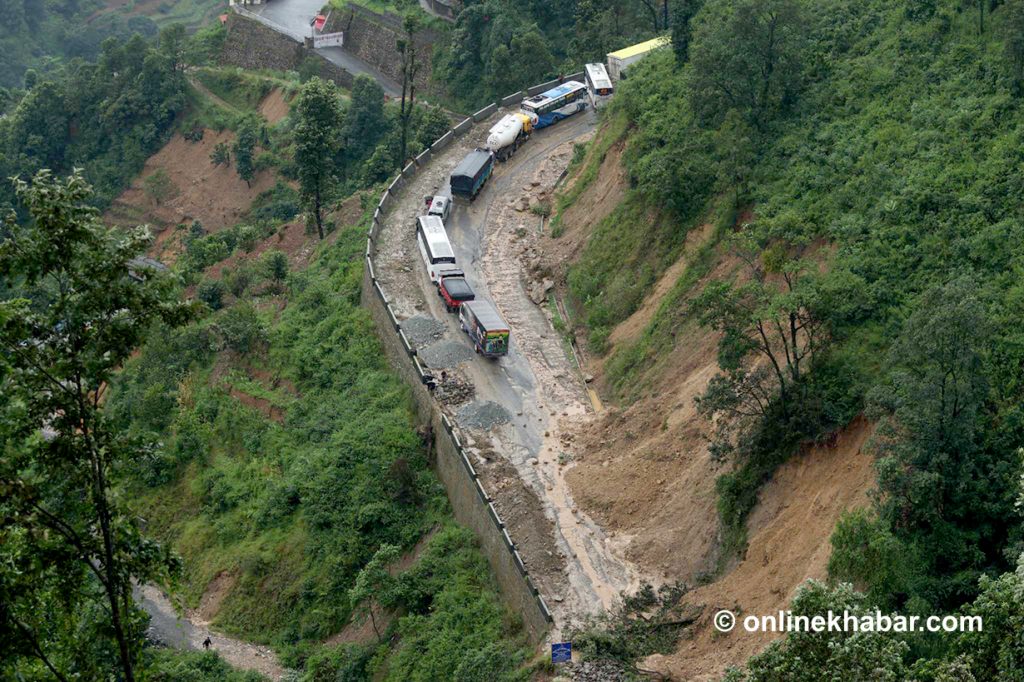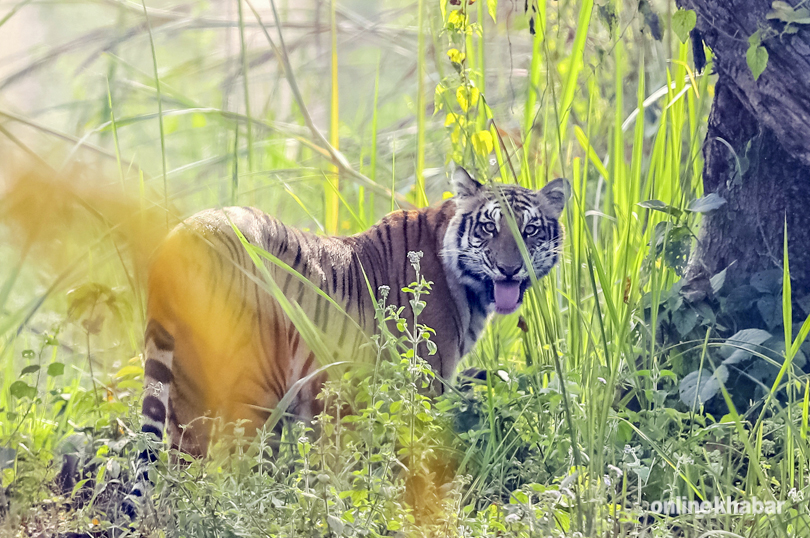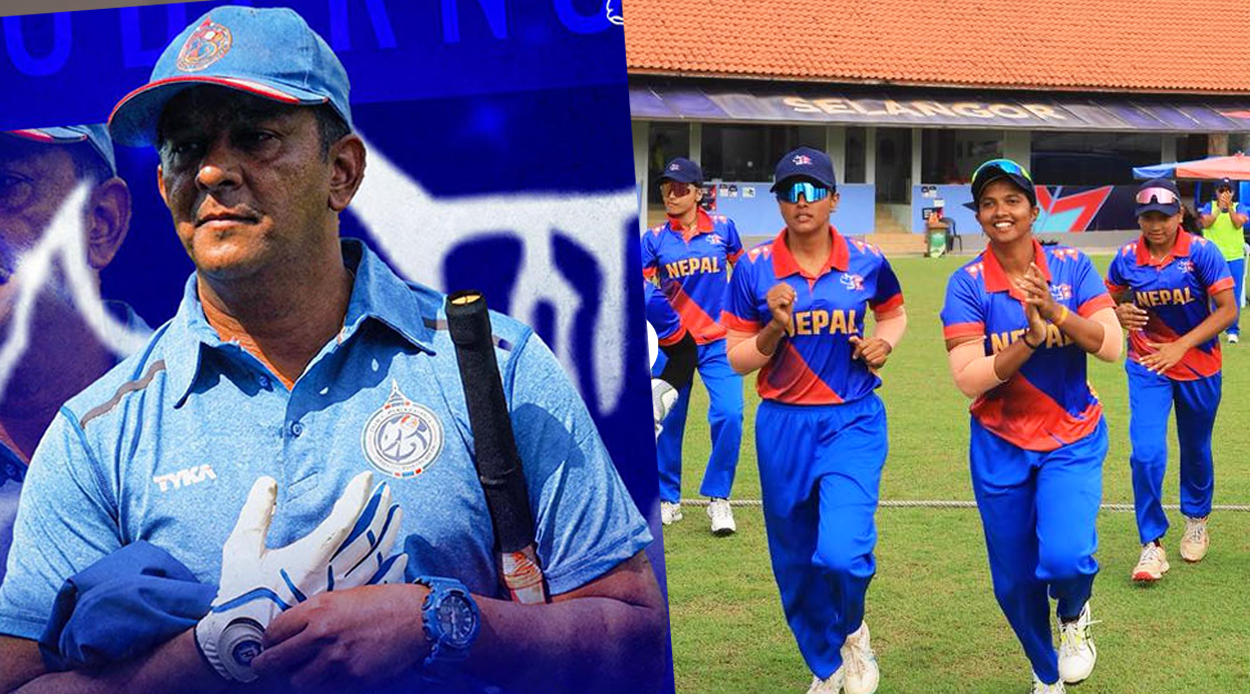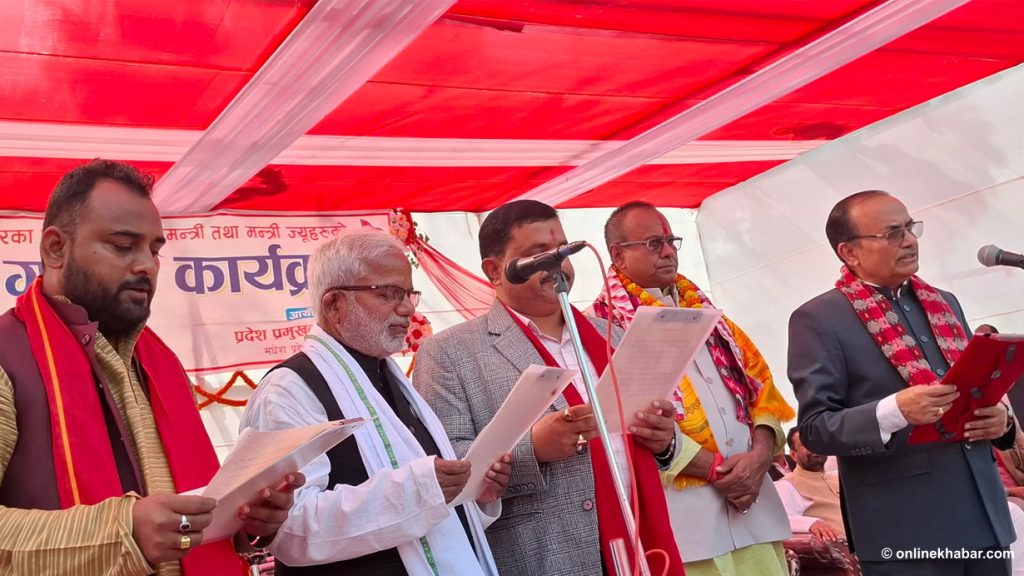Without the usual crowd of peak-season tourists and its logistics virtually unharmed, there are more reasons to visit the Everest region post earthquake.
With clear afternoons and balmy evenings, Nepal welcomes majority of its visitors in the months of September-November. The vicinity of Everest, with its hotels and charming teahouses should have been jam-packed with tourists now. But the number of tourists visiting the Everest region has declined sharply after the devastating earthquake and strikes in the Terai.
According to hotel owners of the region, the number of tourists this year is only around 25 percent of the corresponding figure for last year. But this world-famous region was never truly affected by the April-May quakes. In fact, its hotels and lodges are all decked-up to welcome visitors.
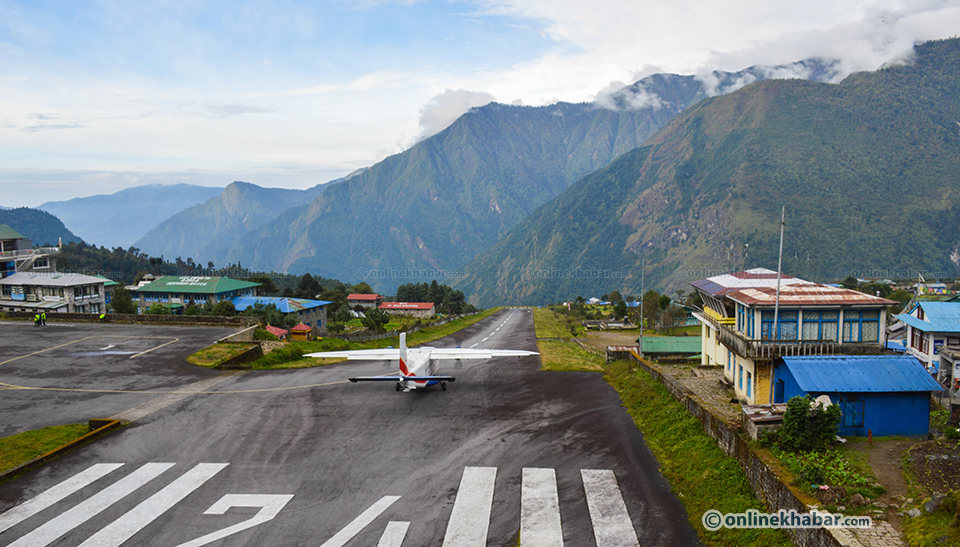
This year the number of tourists visiting the area is only around 25 percent of the corresponding figure for last year.
Few of those hotels which had been damaged have now been restored to their original form and the bridges and trekking routes around the region have all been declared safe. The region has been popular with backpackers and trekkers from within Nepal and all over the world for the scenic beauty it offers. This region is home to the world’s tallest peak Everest and other equally imposing peaks.

How to reach there?
Trekking duration around the region can span for weeks or can also be shortened according to one’s preferences. The shortest trek can be up to Syangboche. If you want to stretch your legs for a longer duration, the trek to Gokyo and Gokyo Ri is recommended. The longest trek will take you to Kalapathar and Everest base camp.
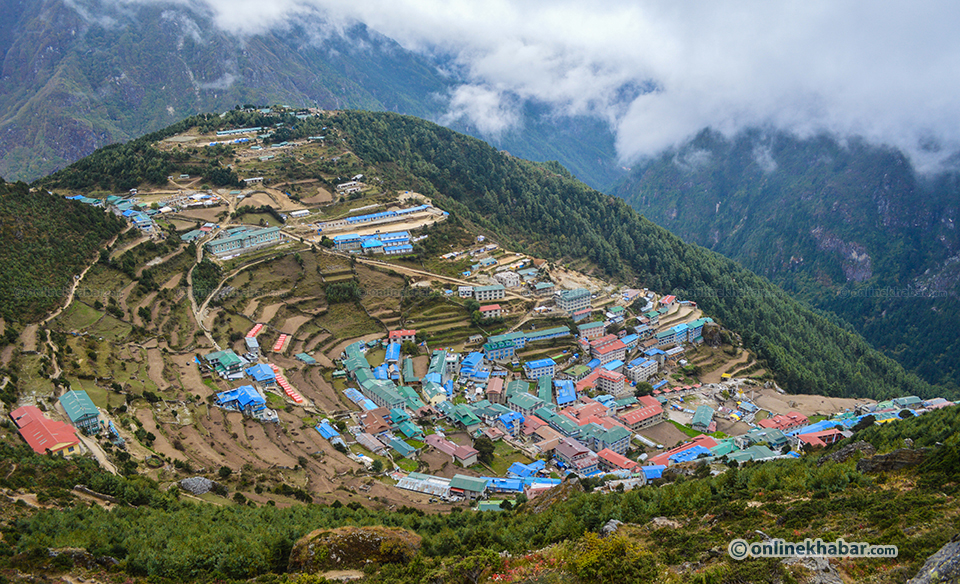
Lukla is the starting point of all treks to this region. While Lukla can be reached in a day from Kathmandu, it will take another day to reach Namche and a day more to reach Syangboche. In the fourth day, one can reach Moncho after which you can return to Kathmandu via Lukla which can further take two more days.
From Syangboche, one can trek via Dole and Marmecho to reach Gokyo. You will reach Gokyo on the sixth day of the trek, and on the seventh day, Gokyo Ri.
From Syangboche, one can trek via Dole and Marmecho to reach Gokyo. You will reach Gokyo on the sixth day of the trek, and on the seventh day, Gokyo Ri.
Situated at an altitude of 5,368 metres, Gokyo Ri offers a stunning panorama of the peaks of this region including Everest. You can return to Kathmandu from Gokyo Ri via Dole / Forche, Namche and then Lukla.
The 17-day trek
If you can afford to spend more time on this region, then a trek up to Kalapathar and Base camp can be quite an experience. The trek up to Kalapathar and Base camp is best experienced languidly. Make sure you have plenty of time to savour and reflect on the immense beauty on offer.
On the first day, a short plane ride will to take you to Lukla. If you reach Lukla on time, you can spend the night in Phakding, a small village around three hours away from Lukla. You will reach Namche on the second day, Syangboche on the third, Dole on the fourth, Marmecho on the fifth, Gokyo on the sixth and Gokyo Ri on the seventh.
On the eighth day, spend the night in Thaknaka. Cho La pass / Jongla awaits you on the ninth day. On the tenth day you will reach Lobuche after will you will finally reach Base camp via Gorakshep on the eleventh day.
At 5,384 metres from the sea level, Base camp offers the most intimate way to experience Everest without ascending it. If a little sense of adventure still remains, trek up to Kalapathar which is at even higher altitude than Base camp or you can return to Gorakshep to rest for the night.
On the twelfth day however, a trek to Kalapathar is mandatory to see the sun’s first rays reflected on Everest’s gleaming facade. This, sadly, also marks the end of the trek. On the same day, you will have to return to Gorakshep for lunch if you want to maintain your schedule and follow your itinerary. On the thirteenth day, you will reach Dingboche / Pheriche, Tengboche on the fourteenth, Namche on the fifteenth, Lulka on the sixteenth and Kathmandu on the seventeenth.
Accommodation for the 17 days which you will be spending in the region, comes in the form of charming teahouses, utilitarian lodges and indulgent hotels. Food is available on most of the routes. If all the rooms are already taken, which happens in most peak seasons, one can pitch a tent and while away the night.
If you are a foreigner, this 17 day trek will set you back by $1200-1800. Nepali trekkers can expect to spend a little less. The shorter, six day trek can halve the expenditure for those with limited budget.




